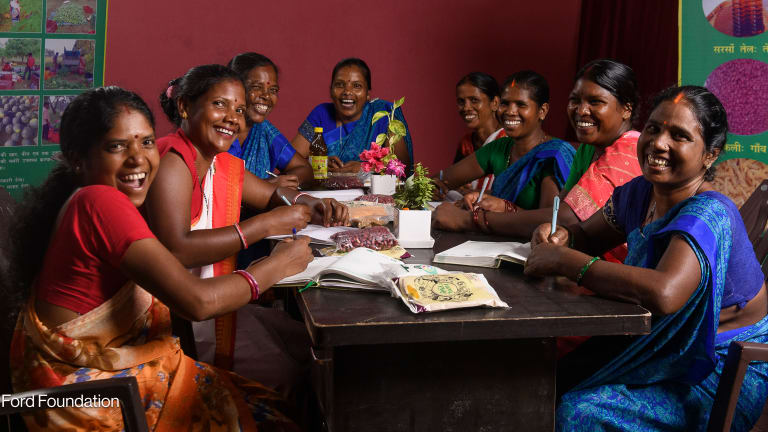
The Aga Khan Development Network was selected as a Devex Top 40 Development Innovator based on a poll of thousands of global development professionals who are part of Devex, the largest network of aid and relief workers in the world.
Announced on April 18, Devex Top 40 Development Innovators is an impressive listing of the world’s leading donor agencies & foundations, development consulting companies, implementing NGOs, and advocacy groups.
We asked each of the Innovators four questions to learn how they stay ahead to the curve and tackle old development challenges in new ways. Here’s how AKDN responded:
‘Improving living conditions and opportunities for the poor, without regard to their faith, origin or gender’
If you had to condense it to just one or two sentences, overall, what is it that makes your organization innovative?
Before beginning work, the agencies of the AKDN ask communities to identifiy their own priorities rather than deciding how the development process should start – in the belief that local people have a better grasp of their own needs than any external organisation. Secondly, AKDN integrates culture with social and economic initiatives, reflecting the idea that culture can play a catalytic role in bringing about broad, positive change.
Can you provide a specific example of something your organization has done that is particularly innovative?
The notion of “cultural fit” is important to AKDN in all of its projects. The Madrassa Early Childhood development program, for example, arose out of a concern expressed by Muslim parents in Mombasa, Kenya, that their children were falling behind. At the parents’ request, the Aga Khan Foundation designed a culturally appropriate and self-sustaining early childhood education model that augmented, rather than supplanted, existing Koranical instruction in poor and remote communities. The programme now operates in over 500 schools in Uganda, Kenya and Tanzania.
Likewise, in the Kyrgyz Republic, a “jailoo” kindergarten program (“jailoo” means summer pasture) allowed semi-nomadic children to keep up with their urban counterparts.
In Madagascar, a successful foundation rice program does not impose particular rice cultivation methods, but offers a range of inputs and techniques which farmers combine with local culture and knowledge to find the best results for their contexts.
Looking ahead 10 years, what are some of the innovations in international development that your organization wants to be a part of?
Future development will have to take regional approaches that do not stop at national borders but tackle development in broad geographic areas that often cross national boundaries. In northern Afghanistan, for example, it is easier to trade with Tajiks across their border than with Afghan towns across several mountain ranges. To this end, AKDN has built three bridges (and is building two more) across the Panj river, has worked on regional health programs and has channeled hydropower from Tajikistan to northern Afghanistan. Similar programs operate in Africa.
Another trend is integrated development. Recognizing that single innovations or single disciplines applied in isolation rarely make a lasting impact on the overall quality of life led AKDN to the conclusion that sustained positive change is the result of a range of integrated efforts in social, economic and cultural development – applied over longer periods than typical funding cycles and coordinated with a broad range of partners, from government to the private sector to civil society.
One factor in driving innovation at any organization is the talent you hire and the partnerships you make. How does your organization take into account innovation when it comes to cultivating talent and partners?
Innovation is important to the development process, but it has to be innovation that leads to results and which is adapted to its context – innovation that has a “cultural fit.” So it is important to approach development with some humility and sensitivity to the local context. Sensitivity of this type can also make the difference between acceptance of new innovations or a rejection.
Check out the full listing of all Devex Top 40 Development Innovators on Facebook.








